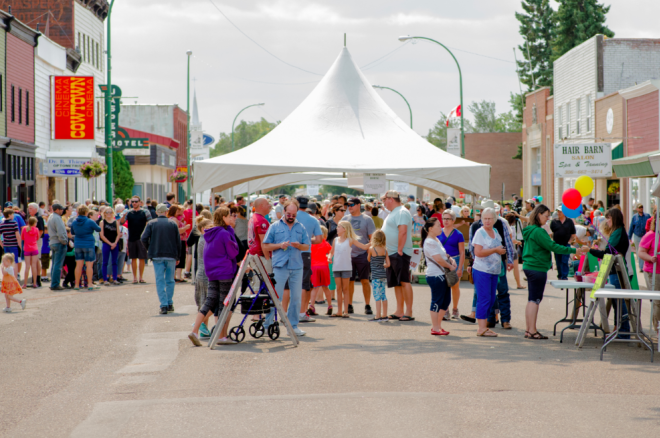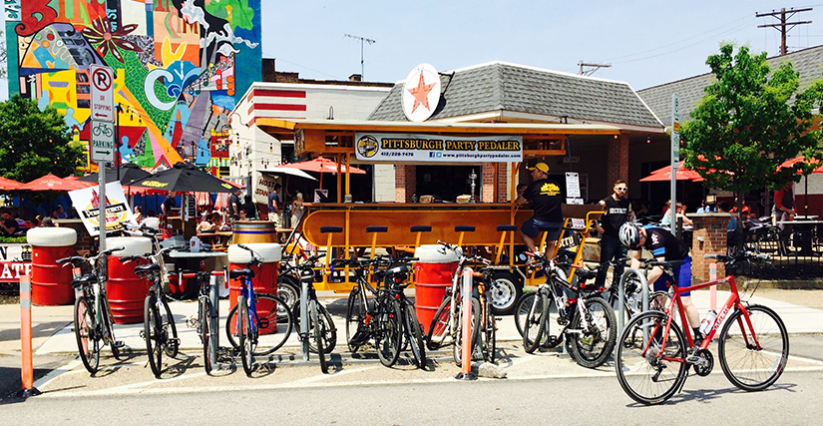A biweekly newsletter with public space news, resources, and opportunities.
A curated dispatch on all things public markets plus the latest announcements from the Market Cities Program.

Many residents of small towns and rural communities care deeply about the future of their towns and they value their uniqueness and strong sense of community. At the same time, many of today's rural communities face urgent challenges: How can they add jobs and support local businesses? How do they create a positive future for their kids? How can they most effectively utilize limited financial, human, and infrastructural resources?
As their economies, environments, and demographics continue to change and evolve, developing locally-driven solutions to these challenges is critical to the long-term vitality of these communities. How can placemaking in these regions help grow strong economies, build much-needed infrastructure, and strengthen a community's already-existing historical, natural, and cultural assets?
“There is this craving, this sense of place and connectedness, that is only provided in small town America. Placemaking helps us unlock the power of place and intensify that sense of connectedness; it is a path to longer term economic transformation.”
-Patrice Frey, President and CEO, National Main Street Center
In order to integrate placemaking into community revitalization efforts in rural America, The National Main Street Center (NMSC) and Project for Public Spaces formed a partnership in 2015. As part of this collaboration, over the course of four months in the spring of 2016, NMSC and PPS presented a series of two-day placemaking trainings in five states—Montana, Oregon, Alabama, Connecticut, and Missouri—to explore actionable placemaking strategies with Main Street managers and community leaders. Reaching over 150 communities in total, these trainings helped educate a wide cross-section of local leaders as well as federal agencies and non-profits about the importance of placemaking in rural America, while connecting Main Street and community leaders with potential regional funding partners.


Many Main Streets are home to monuments and buildings with deeply embedded histories that are integral to the identity of that place. While ensuring that existing places and infrastructure can thrive, rural placemaking efforts must also focus on creating new, quality places by engaging all members of the community. In all placemaking, the process—of consultation, mobilization, and engagement—are just as important as the final outcomes. Community-led initiatives like artist Candy Chang's Looking for Love Again in Fairbanks, Alaska, use crowdsourcing to determine new uses for vacant spaces. For the project, which was commissioned by the Alaska Design Forum, Chang installed huge billboards calling upon local residents to scrawl ideas, visions, past memories, and future hopes for the buildings and their surrounding community. Feedback from the project was then used by the developer and the downtown association to inform next steps.


Rural landscapes and agriculture play a major role in the identity of many small towns, and placemaking initiatives need to build opportunities for new businesses to thrive by providing services, jobs, and amenities for local residents. Supported by a grant from the USDA Rural Community Development Initiative, the Trail Town Program in Western Pennsylvania and Maryland connects a network of small towns along the Great Allegheny Passage. The program works with municipalities, businesses, and other local, regional, and national organizations; to ensure that trail development goes hand in hand with economic development to encourage business growth.
In addition, many Main Streets—like those in Hallam and Bennet, Nebraska—are seeing vast transformations from Lighter Quicker Cheaper interventions that work to slow traffic and create human-scaled places. Supported by a partnership between the Citizens’ Institute on Rural Design™, and the Lincoln/Lancaster County Regional County Planning Department, these easy, low-cost projects include the installations of parklets, benches, curb extensions and all kinds of fun programming to turn streets into places for people, not just cars.


***
By bringing in new ideas, businesses, amenities, and social spaces, small towns can help foster place attachment and encourage young people to stay in their communities. But while there is great passion and talent in rural and small town America, many of these communities simply lack the capacity to develop significant projects or secure the funding to realize them. Better, more far-reaching support is deeply needed.
As Under Secretary of USDA Rural Development Lisa Mensah explained at the White House Convening on Rural Placemaking in November 2015, “partnerships between sectors is central to making rural areas thrive.” Moving forward, it is crucial that we work together to better align existing rural champions, agencies, and partners, as well as the “unusual suspects,” from a wide range of sectors so we can deliver assistance to rural regions that can be fully leveraged and have lasting impact.
The rich text element allows you to create and format headings, paragraphs, blockquotes, images, and video all in one place instead of having to add and format them individually. Just double-click and easily create content.
The rich text element allows you to create and format headings, paragraphs, blockquotes, images, and video all in one place instead of having to add and format them individually. Just double-click and easily create content.
Body Text Body Link
The rich text element allows you to create and format headings, paragraphs, blockquotes, images, and video all in one place instead of having to add and format them individually. Just double-click and easily create content.
Here is some highlighted text from the article.




Headings, paragraphs, blockquotes, figures, images, and figure captions can all be styled after a class is added to the rich text element using the "When inside of" nested selector system.
Headings, paragraphs, blockquotes, figures, images, and figure captions can all be styled after a class is added to the rich text element using the "When inside of" nested selector system.
Headings, paragraphs, blockquotes, figures, images, and figure captions can all be styled after a class is added to the rich text element using the "When inside of" nested selector system.